What is storytelling?
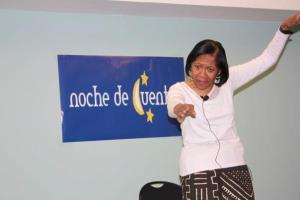
Storyteller Toni Simmons
Based on these and other definitions that can be found on the references from the bibliography below, we can conclude that:
- Storytelling is literally “telling a story”… it makes use of the oral language.
- Storytellers “know” the story… it is not read, and it is not memorized word-by-word, but it is re-created every time it is told.
- Storytellers use the tone and sounds of their voice, hand gestures, and movement to convey the story.
- In many cases, storytellers promote a brief participation of the public by inviting them to join in with refrains, sounds, or noises.
- Storytelling preferably does not include the use of props, costumes, or other visual aids.
- Storytellers usually have a repertoire of folktales, traditional stories, fables, cumulative stories, etc., as genres that are more appropriate for this practice.
Why storytelling?
“Noche is a wonderful way to return to the roots of literacy and use orality as a way to promote literacy in families,” says Oralia Garza De Cortes, a founding member of the Noche de Cuentos Task Force.
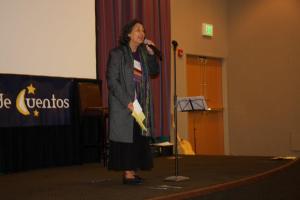
Oralia Garza de Cortez
Storytelling in Latin America
Augusta Baker said:
“Children need to hear stories that give them a sense of their own culture as well as stories that introduce them to other ways of thinking and doing, and that inherently teach respect for other cultures” (as cited in Greene, 1996, p. 33).
Likewise, a program like Noche de Cuentos emphasizes the use of stories as a way to connect Latino children and families with their Latin American origins, while making their culture known to others.
But… what is Latin American storytelling?
Latin America is a conglomerate of countries, nations, cultures, and ethnicities. There is not an actual “Latin American identity.” The geographical area known as Latin America is too diffuse and diverse to be encompassed in one definition. There are, however, some commonalities that make possible to refer to the Latin American cultures.
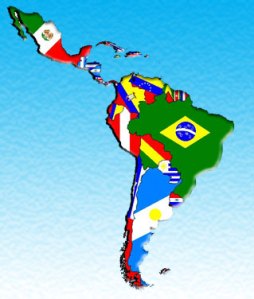
What do Latin Americans have in common?
– Languages: Note the plural! Yes, Spanish is the main, but not the only, language spoken in the region.
– Pre-Columbian civilizations: Some traditions and cultural remains of the region’s ancient indigenous civilizations still have a place in today’s cultures.
– Colonial past: The influence received by the influx of Spanish, Portuguese, and other European colonists complemented the authochtonous legacy to create an inventory of local lore.
So… can we refer to Latin American storytelling?
Yes, but that means recognizing the diversity of cultures included in that vague concept, and focusing on the connections that the oral traditions perpetuated from the three sources mentioned above.
With these remarks in mind, we invite you to explore the different traditional tales and stories from the vast array of Latin American regions.
Please refer to the following bibliography of resources that include examples and information about oral traditions of the many Latin American cultures. If you have materials to add to this bibliography, please send us a message with your recommendation.
Storytelling in Latin America: A Bibliography
Balcells, Jacqueline. The Enchanted Raisin. Trans. Elizabeth Gamble Miller. Pittsburgh: Latin American Literary Review Press, 1988.
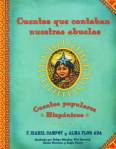
Campoy, F. Isabel and Alma Flor Ada. Cuentos que Contaban Nuestras Abuelas: Cuentos Populares Hispánicos / Tales Our Abuelitas Told: A Hispanic Folktale Collection. New York: Atheneum, 2006.
Dance, Daryl C. Folklore from Contemporary Jamaicans. Knoxville: U of Tennessee Press, 1985.
De Almeida, Livia and Ana Portella. Brazilian Folktales. Ed. Margaret Read MacDonald. Englewood, Co: Libraries Unlimited, 2006.
DeSpain, Pleasant. The Emerald Lizard: Fifteen Latin American Tales to Tell in English and Spanish / La Lagartija Esmeralda: Quince Cuentos Tradicionales Latinoamericanos. Trans. Mario Lamo-Jimenez. Little Rock: August House, 1999.
Gerson, Mary-Jo. Fiesta Femenina: Celebrating Women in Mexican Folktales. Ill. Maya Christina Gonzalez. Cambridge: Barefoot Books, 2005.
Gonzalez, Lucía M. “Storytelling and Recently Arrived Latino Children.” Celebrating Cuentos: Promoting Latino children’s Literature and Literacy in Classrooms and Libraries. Ed. Jamie Campbell Naidoo. Santa Barbara: Libraries Unlimited, 2011. 213-225.
Greene, Ellin. Storytelling: Art and Technique. 3rd ed. New Providence, NJ: Bowker, 1996.
Hernández, Antonio. The Eagle and the Rainbow: Timeless Tales from Mexico. Ill. Tomie de Paola. Golden: FulcrumKids, 1997.
Leeming, David A. and Marion Sader. Storytelling Encyclopedia: Historical, Cultural, and Multiethnic Approaches to Oral Traditions Around the World. Phoenix, Az: Oryx Press, 1997.
Lenox, Mary F. “Storytelling for Young Children in a Multicultural World.” Early Childhood Education Journal, 28.2, (2000): 97-103. Academic Search Complete. Web. 1 Feb. 2012.
Lopez, Asbel. “Weaving Magic with the Spoken Word.” Unesco Courier May 2001: 48-49. Academic Search Complete. Web. 12 feb. 2012.
MacDonald, Margaret Read. Traditional Storytelling Today: An International Sourcebook. Chicago: Fitzroy Dearbon, 1999.
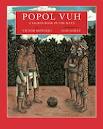 Montejo, Victor. Popol Vuh: Sacred Book of the Maya. Ill. Luis Garay. Trans. David Unger. Toronto, Ontario: Groundwood Books, 1999.
Montejo, Victor. Popol Vuh: Sacred Book of the Maya. Ill. Luis Garay. Trans. David Unger. Toronto, Ontario: Groundwood Books, 1999.
Naidoo, Jamie Campbell, ed. Celebrating Cuentos: Promoting Latino children’s Literature and Literacy in Classrooms and Libraries. Santa Barbara: Libraries Unlimited, 2011.
Perez, Elvia. From the Winds of Manguito: Cuban Folktales in English and Spanish / Desde los Vientos de Manguito: Cuentos Folklóricos de Cuba, en Inglés y Español. Ed. Margaret Read MacDonald. Trans. Paula Martin. Englewood, Co: Libraries Unlimited, 2004.
Salles-Reese, Veronica. From Viracocha to the Virgin of Copacabana: Representation of the Sacred at Lake Titicaca. Austin: U of Texas Press,1997.
Smith, Mary Morgan and Mary Ann Gilpatrick. “Storytelling 101: Resources for Librarians, Storytellers, and Storytelling Librarians.” Children and Libraries 3.1 (2005): 37-39.
Vigil, Angel. The Corn Woman: Stories and Legends of the Hispanic Southwest / La Mujer del Maíz: Cuentos y Leyendas del Sudoeste Hispano. Englewood: Libraries Unlimited, 1994.
Valdez, Mario J. “Storytelling and Cultural Identity in Latin America.” Latin American Narratives and Cultural Identity: Selected Readings. Eds. Irene Maria F. Blayer and Mark Cronlund Anderson. New York: Peter Lang, 2004. 9-27.
——
[Alicia K. Long, 2012]
